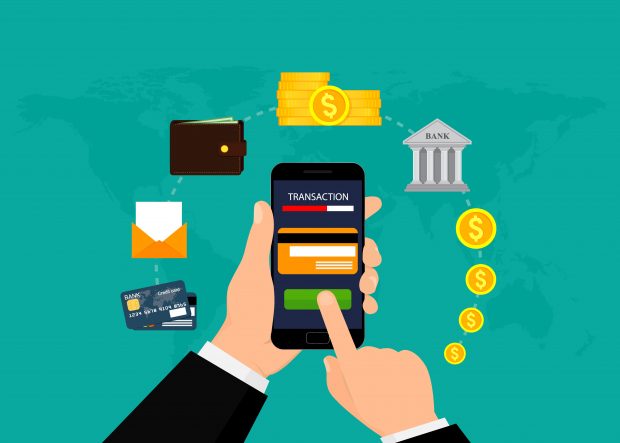 Consumers want the best of everything when it comes to banking. (Source: Shutterstock)
Consumers want the best of everything when it comes to banking. (Source: Shutterstock)
When it comes to their banking needs, consumers want the best of both worlds.
They want the branch and ATM networks of traditional financial institutions, and they want great technology for online and mobile banking, the latter of which direct, or branchless, banks are successfully delivering.
Recommended For You
What's more, direct banks are winning more young consumers compared to credit unions, community banks and regional financial institutions; and this trend is likely to continue, according to new research by BAI, a Chicago, Ill.-based nonprofit independent organization that serves the financial services industry.
Although the research revealed concerning challenges for credit unions, BAI's information showed the strengths and weaknesses of direct banks, which may help financial cooperatives understand how they can compete against these up and coming servicers.
Karl Dahlgren, managing director of research for BAI, pointed out that direct banks aren't going away any time soon, and traditional financial services organizations should continue to view them as real competitors.
BAI surveyed 600 consumers, focusing on their perceptions of banking with direct banks.
Younger generations are more open to banking digitally, with 80% to 90% of them saying they would consider opening a checking account with a direct bank as long as a number of incentives are offered. Nevertheless, about 70% to 90% of consumers said they want to maintain a relationship with a financial institution that operates branches and ATMs.
"They want the best of both worlds. And they're kind of picking and choosing to get that right now with some of their business going to direct banks for certain reasons and some going to traditional banks," Jason Mencias, BAI's manager of research, said. "So they're getting the best physical experience from [traditional] banks and they're getting the best digital, obviously, from online banks."
When consumers were asked which type of institution their household uses as its main financial services organization, 52% said a large bank, while 19% said a direct bank without branches. Only 16% of consumers identified a credit union or community bank as their primary financial institution and just 13% said a regional bank.
"If you look at the rate at which deposits are growing for traditional banks versus the rate at which they're growing for direct banks, it's three times faster for direct banks," Dahlgren said. "Now, with that being said, they're growing off a smaller base. So that's from a percentage standpoint, but certainly, the rest of the industry needs to be paying attention to these trends."
Among survey respondents who said a direct bank is their primary financial institution, 62% of their total deposit balances, including checking, savings, money market or CDs, are currently with their direct bank. For traditional banks, that total deposit percentage is 42%.
Generationally, as you move from the boomers to the younger generations such as the millennials, consumers are three times more likely to prefer to bank at a direct bank than boomers, Dalhgren said.
What's more, Gen Z, those in the age group of 18 to 24, is more likely to use a direct bank in the future. In the BAI survey, 24% of Gen Z consumers said they anticipate an online bank will become their main financial institution in the next 12 to 24 months, compared to 21% of millennials, 11% of Gen Xers and 10% of boomers.
Moreover, 72% consumers said they would consider opening a checking account with an online bank, while 28% said they wouldn't because direct banks can't compete with traditional financial organizations with branch and ATM convenience.
However, among millennials and Gen Zers, 80% to 90% said they would consider opening a checking account with a direct bank. That's critical for growth because a checking product is one of the main drivers for securing primary relationship status with those potential customers.
But here's where it may get somewhat more complicated and expensive for online banks to capture new customers with a checking product:
"Although people are willing to open a checking account with a direct bank, it means that there would have to be some benefits," Mark Riddle, BAI's director of research and content delivery, said. "And the top benefits are in this order, if [they] received a better financial cash reward, for example. Cash always beats out everything else. I've been doing research for a lot of years, and that's always the case. A much higher interest rate is number two. Reimbursement for fees, like ATM fees, or if they could use other financial service organizations branches for free."
To offer some of these benefits, Riddle said he expects direct banks to form partnerships with ATM networks to offer their customers fee-free access.
For traditional banks and credit unions, stepping up their investments in technology is critically important because younger consumers are changing the definition of banking convenience, which has been traditionally defined as what's offered by financial institutions that have a strong branch and ATM network.
Nineteen percent of consumers surveyed said convenience was the top reason for opening a deposit account with a direct bank. Fourteen percent said better rates, while 10% said lower fees and 9% said other 24/7 customer services and a great reputation.
For BAI researchers, convenience coming in at No. 1 was a surprising and interesting finding.
"I was thinking of convenience in more of a traditional sense, which in my mind was more based on physical presence with branches and ATMs. But once I reset my thinking to a more digital mindset, I could see things like ease of account openings, seamless digital technology and 24/7 customer service being drivers of convenience for direct bank customers," Mencias said.
This change in the meaning of banking convenience from branch locations and ATMs to digital capabilities of financial institutions will only continue to grow.
Realistically, however, can traditional financial institutions deliver the best of both worlds that consumers want by providing the best physical presence and offering the best digital capabilities?
"I think traditional banks can improve in digital, and direct banks have the opportunity to improve their physical presence via ATM reimbursements or shared branches like we see in Europe or with credit unions in the U.S," Mencias said. "I think there's also partnering opportunities on both sides with other retailers possibly for the physical presence, or with fintechs to improve on the digital side."
BAI's research found that the top 10 ways financial institutions can attract new customers is by improving their apps and digital capabilities.
Among BAI's survey respondents, 44% said a clear, easy-to-use app with check deposit and bill pay came in at No. 1.
Thirty-six percent said quicker money transfers, and others said faster payments (33%), 24/7 customer service (27%), the ability to turn a debit/credit card off (18%), texting to a live person (17%), the ability to take a picture of a bill to pay it (17%), online account opening (16%), quick/easy ways to report a suspected breach of account (14%), and better product and service recommendations (14%).
© 2025 ALM Global, LLC, All Rights Reserved. Request academic re-use from www.copyright.com. All other uses, submit a request to [email protected]. For more information visit Asset & Logo Licensing.








